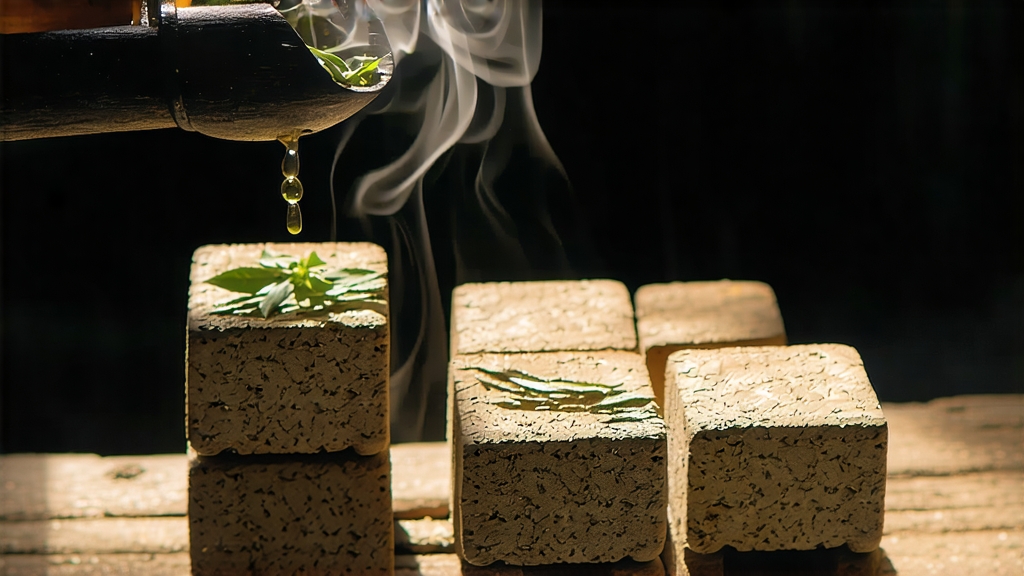
Tucked beneath the humid emerald mountains of southern China’s Guangxi Zhuang Autonomous Region, Liu Bao tea has spent four centuries quietly fermenting its way into the hearts of tea caravans, dockworkers, and, more recently, global connoisseurs. Unlike the better-known Pu-erh from Yunnan, Liu Bao is the hidden river barge of the dark-tea world: earthy, medicinal, and capable of improving with age the way a violin mellows beneath a master’s bow. To understand Liu Bao is to sail downstream on the Xunjiang River, taste the mineral breath of limestone caves, and listen to the slow heartbeat of microbes turning leaf into living history.
Historical currents
Liu Bao literally means “six forts,” a reference to the six stockades that once guarded the small trading town of Wuzhou. During the Ming dynasty (1368-1644), imperial edicts designated Guangxi as a key corridor for “border tea” exchanged with neighboring provinces and Indochina. Compressed Liu Bao bricks traveled by porter, then by raft, down the Xunjiang and Pearl Rivers to Guangzhou’s bustling port. From there, steamships carried them to Hong Kong, Malaysia, and Singapore, where tin-mine coolies swore the tea cured rheumatism and drove away the damp. In 19th-century Kuala Lumpur, Liu Bao was currency; wages were sometimes paid in sturdy dark bricks that could be shaved into kettles boiling over open fires. The tea’s reputation as a digestive and blood-cleansing tonic followed the Cantonese diaspora, embedding Liu Bao in the medicinal cuisine of Southeast Asia.
Varietal identity
Botanically, Liu Bao is almost always Camellia sinensis var. sinensis, the small-leaf China bush. Yet the cultivars selected in Guangxi—native strains such as “Zhongyezhong” (medium-leaf) and “Xiaoyezhong” (small-leaf)—possess thicker cuticles and higher polyphenol oxidase activity, traits that allow them to withstand the intense wet-piling process without collapsing into compost. Locals liken the ideal leaf to a sparrow’s tongue: small, slightly serrated, and oily to the touch. Spring picking, before the monsoon swells the buds, yields the most nuanced maocha, the raw tea that will later be coaxed into ripeness.
Crafting the darkness
Liu Bao’s magic lies in “wo dui,” the wet-piling fermentation invented centuries before controlled microbiology. After plucking, the leaves wither briefly under subtropical sun, then are pan-fired at 180 °C to arrest green enzymes. Rolling follows, rupturing cell walls for future microbial access. The semi-dried leaf is piled 60–80 cm deep on bamboo mats lining cement floors. Workers sprinkle river water, cover the mound with jute sacks, and allow internal temperatures to climb to 55 °C over the next fortnight. Thermophilic molds—chiefly Aspergillus niger and Blastobotrys adeninivorans—proliferate, oxidizing catechins into theaflavins and thearubigins that tint the liquor crimson-brown. Every two days the pile is “turned,” a laborious fork-and-shovel dance that aerates the core and prevents anaerobic spoilage. When the leaf reaches a chestnut sheen and emits a betel-nut sweetness, the pile is dismantled and sun-dried on bamboo racks. Some producers press the tea into 500 g bricks, others into 30 kg “lantern baskets” woven from bamboo strips and rice-straw rope. These baskets, stacked in riverside warehouses, breathe through their gaps, allowing slow secondary fermentation for decades.
Aging architecture
Traditional storage is a marriage of geology and climate. Caves carved into the limestone karsts around Wuzhou maintain 75–85 % relative humidity and temperatures between 20–26 °C year-round. Inside, Liu Bao bricks acquire a “cave flower” bloom—a harmless white mold (Penicillium spp.) that metabolizes residual sugars into γ-aminobutyric acid, imparting a cool, camphor finish. Merchants rotate stocks every three years, moving younger teas to drier upper shelves and older ones deeper into the cave’s throat. A thirty-year Liu Bao can fetch prices rivaling vintage Bordeaux, its leaves so dark they reflect light like obsidian.
Tasting time
To brew Liu Bao is to summon a miniature geology